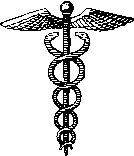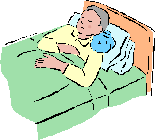DOH Medicaid Update November 2005 Vol. 20, No. 12
Office of Medicaid Management
DOH Medicaid Update
November 2005 Vol. 20, No. 12
State of New York
George E. Pataki, Governor
Department of Health
Antonia C. Novello, M.D., M.P.H., Dr. P.H.
Commissioner
Medicaid Update
is a monthly publication of the
New York State Department of Health,
Office of Medicaid Management
Kathryn Kuhmerker, Deputy Commissioner
Table of Contents
Billing for Epogen, Aranesp, Neupogen, and Neulasta
Electronic Remittances to Provide Retroactive Rate Adjustment Detail
Nonemergency Transportation Claims: Driver's License Number and Vehicle License Plate Number
Long Term Care Providers: Partnership for Long Term Care Program
Timeliness of Electronic Remittances
Taking Control of Arthritis: Beyond COX-2 Inhibitors
Patient Educational Tools: Influenza - Are you at Risk?
Portable X-ray Demonstration Project Reinstated
Seminar Schedule and Registration
Physician and DME Provider: Medicare Coinsurance Enhancement
Provider Resources
eMedNY
Update
All Providers!
Phase II Compliance Deadline
December 31, 2005
Return to Table of Contents
Since the end of our eMedNY transition period on June 20, 2005, the Department has permitted providers to continue to submit legacy two-digit locator codes and two-digit license type codes instead of the eMedNY required three-digit locator codes and three-digit profession codes. Also, providers have been able to continue entering an eight-digit Prior Authorization (PA) number where an eleven-digit number has been assigned. The purpose for the accommodation was to give providers still experiencing difficulties with the new eMedNY billing requirements additional time to complete their conversions.

Please be advised that the deadline for all providers to be fully compliant with the eMedNY Phase II requirements is
December 31, 2005. This date is final!
Beginning January 1, 2006, eMedNY will only accept the three-digit locator codes, and license numbers must be preceded by three-digit profession codes. Claims submitted with the legacy two-digit locator code and/or two-digit license type code will be rejected. Eight-digit PA numbers will only be accepted where an eight-digit number was issued.
If you have not yet been able to convert your billing system to accommodate the Phase II required changes please expedite your efforts now. If you purchase software from a vendor or utilize services of a clearinghouse or a billing service you need to contact them immediately. Make sure they are aware of the eMedNY requirements and are proceeding aggressively with the changes.
Please do not place your Medicaid revenue stream at risk. Make sure you are completely compliant before December 31, 2005.
Questions? Contact CSC Provider Services at (800) 343-9000.
BILLING FOR
EPOGEN, ARANESP, NEUPOGEN & NEULASTA
Return to Table of Contents

This provides clarification of proper procedure coding on claims for Epogen, Aranesp, Neupogen and Neulasta for Categories of Service (COS) listed below.
Medicaid as Sole Coverage
Effective April 1, 2005, procedure code J0880 (Aranesp) was discontinued for claims where the recipient has Medicaid as their sole coverage. For these recipients, Aranesp should be billed using the procedure code specific to your COS listed in the chart below.
Medicare as Primary Coverage
When Medicare is primary, code J0880 will be recognized by our system for purposes of deductible and/or coinsurance payment.
Aranesp Excluded from Nursing Facility Rates
Effective June 1, 2005, Aranesp was excluded from nursing facility rates. Aranesp provided to Medicaid fee-for-service nursing home residents is billed by the dispensing pharmacy.
Please refer to the June 2005 Medicaid Update announcing this change at:
www.health.state.ny.us/nysdoh/mancare/omm/2005/jun2005.htm#may
Physicians, Nurse Practitioners and Ordered Ambulatory Providers
For physicians, nurse practitioner and ordered ambulatory providers, these drugs are reimbursed at the provider's actual acquisition cost.
For Practitioners, the following codes are reimbursable:
| COS/PROVIDER | DRUG | PROCEDURE CODE |
|---|---|---|
| 0460, Physician 0469, Nurse Practitioner | Epoetin Alfa (Epogen ) (for non-ESRD use) per 1,000 Units | Q0136 |
| 0460, Physician 0469, Nurse Practitioner | Darbepoetin Alfa ( Aranesp ) (for non-ESRD use) 1 mcg | Q0137 |
| 0460, Physician 0469, Nurse Practitioner | Filgrastim ( Neupogen ) | J1440 (300 mcg) J1441 (480 mcg) |
| 0460, Physician 0469, Nurse Practitioner | Pegfilgrastim ( Neulasta ) 6 mg | J2505 |
Chemotherapy Clinics: For providers with rate code 3092 (Chemo Clinic Service), the following codes are reimbursable when billed on the same date of service as your chemotherapy clinic rate. You must bill for the clinic visit as a clinic claim on the x12 837l format and bill separately for the drug as an ordered ambulatory claim on the x12 837l, 837P or the NYS HCFA-1500 paper claim following the instructions in the companion guides and provider manuals.
NOTE: If you do not have rate code 3092, the drugs are included in your clinic rate reimbursement and may not be billed separately. If you do have rate code 3092, use the following chart for billing.
| COS/PROVIDER | DRUG | PROCEDURE CODE |
|---|---|---|
| 0160, Diagnostic & Treatment Center 0287, Hospital Outpatient Dept. | Epoetin Alfa (Procrit) (for non-ESRD use) per 1,000 Units | Bill Q0136 as an Ordered Ambulatory Service |
| 0160, Diagnostic & Treatment Center 0287, Hospital Outpatient Dept. | Darbepoetin Alfa ( Aranesp ) (for non-ESRD use) 1 mcg | Bill Q0137 as an Ordered Ambulatory Service |
| 0160, Diagnostic & Treatment Center 0287, Hospital Outpatient Dept. | Filgrastim ( Neupogen ) | Bill J1440 (300 mcg) or J1441 (480 mcg) as an Ordered Ambulatory Service |
| 0160, Diagnostic & Treatment Center 0287, Hospital Outpatient Dept. | Pegfilgrastim ( Neulasta ) 6 mg | Bill J2505 as an Ordered Ambulatory Service |
For Hemodialysis Clinics, the following codes are reimbursable when billed on the same date of service as your dialysis clinic rate (1641 or 2883).
| COS/PROVIDER | DRUG | PROCEDURE CODE |
|---|---|---|
| 0160, Diagnostic & Treatment Center 0287, Hospital Outpatient Department | Epoetin Alfa ( Epogen ) (Per 1,000 Units) |
Bill the Add-On Rate Code - 1806 Bill the Add-On Rate Code - 3106 |
| 0160, Diagnostic & Treatment Center 0287, Hospital Outpatient Dept | Darbepoetin Alfa ( Aranesp ) (for ESRD on dialysis) 1 mcg | Bill Q4054 as an Ordered Ambulatory Service |
Questions can be directed to Mary Rondeau in the Bureau of Policy Development & Agency Relations at 518-473-2160.
eMedNY
Update
All Providers!
Electronic Remittances to Provide
Retroactive Rate Adjustment Detail
Return to Table of Contents
Effective Monday, December 12, 2005 (Cycle 1477), 820 and 835 Electronic Remittances, and the 820 Supplementary File will provide more detailed information for specific claim types:
820 Remittance
The 820 transaction will provide a new value in the ADX segment (H1) to indicate other claim types reported on the 820 Supplementary File.
820 Supplementary File
This file has extensive changes in that it will provide claim detail and messages for:
- NYS State-submitted adjustments and voids.
- Retroactive rate adjustments (both reversals and corrections).
- Approved claims where the rate code was changed during adjudication (no message reported).
- Stop loss and kick newborn/maternal claims where the charge amount is not equal to the payment amount.
Please review the modified record layout provided in the 820 Supplemental Companion Guide carefully and adjust your applications accordingly.
835 Remittance
The 835 transaction will provide the PER segment to report more detail for NYS State-submitted adjustments and voids. In the event of a Retroactive rate adjustment, this segment will provide a message indicating "RETRO RATE REVERSAL" or "RETRO RATE CORRECTION."
Begin modifying your applications immediately to be ready for the December implementation.
To allow time for your programming changes, we have published draft Companion Guides on our website. Please visit NYHIPAADESK by clicking on www.emedny.org/HIPAA/index.html. You will be able to navigate directly to the draft Companion Guides.
A summary of changes is provided in each Companion Guide in the Introduction section entitled "CG MODIFICATION TRACKING."
Questions? Contact CSC at (800) 343-9000.
Nonemergency Transportation Claims
Driver's License Number and Vehicle License Plate Number
Return to Table of Contents

As initially reported in the November 2004 Medicaid Update, all claims (electronic and paper) submitted to Medicaid by nonemergency ambulette transportation providers (category of service 0602) must contain the Driver's License Number; and the Vehicle License Plate Number.
Electronic Claims
The 837 Professional Nonemergency Transportation Companion Guide has been updated to reflect the requirements established by the Department. For most claims:
- the Driver's License Number must be sent in the Referring Provider Name area (loop 2310A), in the Referring Provider Secondary Identification segment.
- the Vehicle License Plate Number must be sent in the Rendering Provider Name portion of the transaction (loop 2310B), in the Rendering Provider Secondary Identification segment.
Please see the Companion Guide for more detail and specific instructions for entering this information on claims for restricted recipients.
The Nonemergency Transportation Companion Guide is available at http://12.23.28.50/HIPAA/Phase_II_Transactions/transactions.html, then select "837 Professional Nonemergency Transportation Companion Guide".
Paper Claims
For paper claim submissions on Claim Form A:
- the Driver's License Number must be entered in Field 22, (Other Referring/Ordering Provider ID/License Number).
- the Vehicle License Plate Number must be entered in Field 21, (Service Provider ID/License Number)
PLEASE NOTE:
- A new Edit (000267 - Vehicle License Plate/Driver's License Number Required) will be implemented in the claims adjudication system for nonemergency transportation claims (Category of Service 0602). The edit will insure the information is entered in the appropriate field for both paper and electronic submissions. Please follow the new billing instructions to avoid unnecessary delays/denials.
- When reporting out-of-state Driver's License Numbers that may be greater than nine characters, only the first nine characters should be reported.
Questions? Contact Computer Sciences Corporation Provider Services at (800) 343-9000.
Attention
Long Term Care
Providers!
Partnership for Long-Term Care Program
Return to Table of Contents
The New York State Partnership for Long-Term Care (Partnership), implemented in 1993, enables New Yorkers to protect their assets while remaining eligible for Medicaid by combining private long-term care insurance with the Medicaid program in a unique way.
If Partnership policyholders' long-term care needs exceed the duration of their policy coverage, they may apply for Medicaid Extended Coverage, a unique form of Medicaid for Partnership program participants, to help meet their ongoing long-term care needs while protecting their assets.
Currently, the Partnership offers total asset protection insurance only.
- This insurance product provides policyholders total asset protection at the time of their Medicaid application, which means eligibility for Medicaid Extended Coverage is based solely on Medicaid income rules.
Coming later this fall, new and more affordable Partnership insurance products will be available in addition to total asset protection plans.
- These new products will offer dollar for dollar asset protection, which means they will provide partial asset protection at the time of Medicaid application where protected assets equal the total amount of benefits paid by the insurance policy.
For more information, visit the Partnership website, www.nyspltc.org, or call 518 474-0662.
Timeliness of Electronic Remittances
Return to Table of Contents

Providers who receive their remittances electronically will receive them by Monday, the same date that is on the check. Occasionally, when there are processing constraints, they will be sent a day or two later.
Providers who do not receive their electronic remittance by close of business on Wednesday MUST call the Help Desk at (800) 343-9000.
Electronic remittances over four weeks old cannot be recreated! It is important that providers pay close attention to their receipt of these remittances, and providers must save these remittance files safely on their own systems. Remittance information over four weeks old may be obtained in paper format.
For information on how to receive a paper version of an old remittance, visit www.emedny.org/HIPAA/QuickRefDocs/index.html. Click on "FOD-7003 Request Copy Remittance" (located under Supplementary Medicaid Documents). Information is also available via fax by calling the Provider Services Fax-On-Demand at (800) 370-5809, request document# 7003.
If you have any questions, please contact CSC Provider Services at (800) 343-9000.
Taking Control of Arthritis:
Beyond COX-2 Inhibitors
Return to Table of Contents

More than 100 conditions fall under the umbrella term "arthritis," including osteoarthritis, gout, ankylosing spondylitis and fibromyalgia. Many rheumatic diseases such as rheumatoid arthritis and lupus are grouped in the arthritis classification.
According to the Centers for Disease Control and Prevention, an estimated 43 million Americans have at least one form of arthritis and the number will grow over the next 20 years. Arthritis affects children and people of all racial and ethnic groups but is more common in women and older adults.
Arthritis is the nation's leading cause of disability. This is true in New York State where approximately 3.9 million adults have some form of doctor-diagnosed arthritis. Many more have chronic joint symptoms, or possible arthritis, without a doctor's diagnosis.
Over the past several months, arthritis medications such as the Cox-2 Inhibitors have come under increasing scrutiny leaving many people with arthritis wondering how they'll manage their condition. Anxiety producing to say the least, but fortunately many forms of arthritis can be managed with proper medical care and self-management techniques.
The safety and efficacy of medications in the U.S. remains well regulated and carefully overseen by the Food and Drug Administration. Patients and their physicians need to make an informed decision together about how to treat the disease. Patients should be advised to consult with their health care provider before stopping or starting any medication including over the counter drugs and supplements.
What Can Be Done to Target Arthritis?
There are proven, effective ways to manage arthritis and reduce the symptoms and disability associated with it.
Self-Management
- Self-management techniques are the key in reducing the pain and disability of arthritis and include weight control and physical activity. One of the best ways to protect joints is with regular exercise, a good diet, and a healthy weight. Weight control and injury prevention measures can lower the risk for osteoarthritis.
- It is important to get an accurate diagnosis. There are numerous types of arthritis and treatments may differ by type. The pain and disability associated with arthritis can be decreased through early diagnosis. Both early diagnosis and treatment, including medication, are better for preventing or stopping damage to joints, which is essential to a person's long-term health.
- Self-management education programs, such as the Arthritis Self Help Course, disseminated by the Arthritis Foundation, teaches people how to manage arthritis and lessen its effects. This six- week course has been found to reduce arthritis pain by 20% and physician visits by 40%.
- Advise people with arthritis not to smoke or to quit if they already smoke. Smoking increases the complications for some types of arthritis as well as putting a person's overall health at risk.
- Encourage patients to take care of their emotional health. Joining a support group or keeping a journal has helped many people, including caregivers, deal with difficult emotions such as anger, frustration and fear.
Exercise

- Moderate exercise is both safe and physically and psychologically beneficial for people with arthritis. Staying active and using muscles and joints helps keep them functional. Thirty minutes of exercise per day, three or more times a week is all that is needed. For a beginner, break the thirty-minutes into three, ten-minute segments.
- Exercise programs developed specifically for people with arthritis such as the Arthritis Foundation PACE (People with Arthritis Can Exercise) and Aquatics Program have shown significant improvements in pain and self-care behaviors as well as self-efficacy.
- Encourage people with arthritis to protect themselves from the sun with protective clothing, sunglasses, and sunscreen that has a sun protection factor (SPF) of 15 or higher. Some types of arthritis can worsen with sun exposure.
Resources
NYS Department of Health Arthritis Program: www.health.state.ny.us/nysdoh/chronic/arthritis.htm
Arthritis Foundation: www.arthritis.org
Lupus Alliance of America: www.lupusalliance.org
Lupus Foundation of America: www.lupus.org
American College of Rheumatology: www.rheumatology.org/public/factsheets/nsaids.asp
U.S. Food and Drug Administration: www.fda.gov/cder/drug/infopage/celebrex/celebrex-ptsk.htm

PATIENT EDUCATIONAL TOOLS
Return to Table of Contents
This month's Patient Educational Tools features
an article on
Influenza: Are you at Risk?
The Medicaid program encourages practitioners to copy and distribute the following information to their patients and to share it with their colleagues.
INFLUENZA
Are You at Risk?

What is Influenza (flu)?
A contagious, respiratory infection caused by influenza viruses. It attacks the respiratory tract (nose, throat, lungs) and usually comes on sudden.
How is the flu spread?
The flu can be passed to others through sneezing, coughing or touching surfaces that have been infected. Adults may be able to infect others beginning one day before getting symptoms and up to seven days after getting sick. That means that you can give someone the flu before you know you're sick as well as when you are sick.
What can I do to protect myself and others?
You can take some simple steps to help prevent the spread of germs.

- Get the flu vaccine
- Cover your sneeze or cough with a tissue, not your hands.
- Wash your hands, prevent the spread of germs
- Give your immune system a boost by maintaining a healthy lifestyle, such as eating balanced meals, regular exercise & drinking plenty of fluids
- Avoid people who are sick
- If you start experiencing flu symptoms, call your health care provider. Certain medication can help if taken within the first 48 hours
Who should get the flu shot?
Given the uncertainties in dose and distribution, prioritization has been implemented for those at highest risk for complications of influenza. According to the CDC recommendations for 2005-06 flu season, the following priority groups should receive the flu vaccine:
- Individuals 6-months of age and older who have been displaced by Hurricane Katrina and are living in crowded group settings.
- Persons 65 years and older with or without co-morbid conditions.
- Residents of Long Term Care facilities.
- Persons 2 to 64 years with co-morbid* conditions.
- Children aged 6-23 months of age.
- Pregnant women.
- Health-care personnel providing direct patient care.
- Caregivers and household contacts of children less than 6-months old.
*Co-morbid: The presence of one or more disorders (or diseases) in addition to a primary disease or disorder.
Who should NOT get the flu shot?
- People who have a severe allergy to chicken eggs.
- People who have had a severe reaction to an influenza vaccination in the past.
- People who developed Guillain-Barre syndrome (GBS) within six weeks of getting an influenza vaccine previously.
- Children less than six months of age.
- People who are sick with a fever. (These people can get vaccinated once their symptoms lessen.)
The flu is a serious disease and can have serious complications. If you are uncertain as to whether you should receive the flu shot, check with your physician.
How do I know if I have the flu?
Symptoms of the flu usually come on quickly and the typical flu season is between the months of November-April. Some symptoms of flu are:
- fever (usually high)
- headache
- extreme tiredness
- dry cough
- sore throat
- runny or stuffy nose
- muscle aches
- gastrointestinal symptoms, such as nausea, vomiting and diarrhea, are much more common among children than adults

How do you treat the flu?
If you have seen a physician, follow his/her recommendations
- Rest.
- Drink lots of fluids such as water, juice, tea, and non-carbonated beverages.
- Over the counter medications can help treat the symptoms (check with your physician).
When should I call my doctor?
If you experience shortness of breath, chest discomfort, ear pain, high fever or you have a chronic condition, contact your health care professional immediately so that they can recommend what is the best treatment for you.
Education
Being aware of symptoms of the flu and taking some simple steps to prevent the spread of germs is essential. Prevention is the first step, vaccinate, educate others & teach others the importance of proper hygiene. Stay healthy!
Source adapted from:
New York State Department of Health, Influenza fact sheet
Center for Disease Control and Prevention, Influenza (flu) protect yourself & your loved ones. Sept 2, 2005
U.S. Food and Drug Administration Beat the Winter bugs, hold your own against colds and flu.
For more information on Influenza, you can visit the following websites:
New York State Department of Health at www.health.state.ny.us/nysdoh/flu/flu_fact_sheet.htm
Center for Disease Control and Prevention at www.cdc.gov/flu/keyfacts.htm
U.S. Food and Drug Administration at www.fda.gov
The NYS Medicaid Program reimburses for medically necessary care, services, and supplies needed in the diagnosis and treatment of Influenza.
Attention
Portable X-Ray
Demonstration Program
Providers
Residential Health Care
Facilities
Intermediate Care
Facilities for the
Developmentally Disabled
Portable X-Ray Demonstration Project Reinstated
Return to Table of Contents
The Portable X-Ray Demonstration Project has resumed.
This program ended June 30, 2004, but was recently reinstated through June 30, 2006 by Chapter 114 of the Laws of 2005.

Providers enrolled in the Portable X-Ray Demonstration Project were notified by letter that they may begin billing for portable x-ray services beginning September 14, 2005.
This demonstration project is for services provided to residents of Residential Health Care Facilities (RHCFs) or Intermediate Care Facilities for the Developmentally Disabled (ICF/DDs) whose only health coverage is Medicaid.
Questions? Contact the Bureau of Policy Development and Agency Relations at: 518-473-2160.
Seminar Schedule and Registration
Return to Table of Contents
Computer Sciences Corporation (CSC) announces a schedule of seminars to be offered to providers and their billing staff.
Seminar locations and dates are available at the eMedNY website. Registration is fast and easy.

Go to www.emedny.org/training/index.aspx to register for the eMedNY Training Seminar appropriate for your provider category and location.
If you are unable to access the internet to register, please contact CSC's call center at (800) 343-9000, to obtain a registration form. You may also request seminar schedule and registration information by contacting CSC's Fax on Demand at (800) 370-5809.
Please refer to these resources frequently for additional seminar offerings.
CSC representatives look forward to meeting with you at upcoming seminars!
2005 Medicare Coinsurance Enhancement
for Physicians and DME Providers
Return to Table of Contents
The 2005-06 State Budget requires that each physician and durable medical equipment (DME) provider that received Medicare coinsurance payments during the period April 1, 2005 through June 30, 2005 also receive a "2005 Coinsurance Enhancement" payment in an amount determined as follows:
- The Department of Health will determine the ratio of each physician's and DME provider's Medicare coinsurance payments to the total of all Medicaid coinsurance payments made to physicians and DME providers respectively, during the April 1, 2005 through June 30, 2005 period. This ratio will be expressed as a percentage.
- For each physician, the Department will then multiply the percentage by $4,700,000.
- For each DME provider, the Department will then multiply the percentage by $300,000
These are the amounts appropriated by the Legislature.
- The result of such a calculation represents the 2005 Coinsurance Enhancement, and will only be paid to physicians and durable medical equipment providers that received a Medicare coinsurance payment during the time period cited above.
The Department has determined that approximately 17,000 physicians and 530 DME providers will receive a coinsurance enhancement payment. The payment will be made in separate checks mailed to qualifying physicians and DME providers. This payment will most likely be made during December 2005.
These checks will be mailed to providers directly from the Office of the State Comptroller. Eligible providers will receive only a check - with no supporting documentation. You will be able to identify the check by the message "2005-Coinsur-Enhance" which will appear on the payment stub.
If you have any questions, please call Computer Sciences Corporation Provider Relations at (800) 522-5518 or (518) 257-4104.
Fraud impacts all taxpayers.
Return to Table of Contents
Do you suspect that a recipient or a provider has engaged in fraudulent activities?
Please call:
1-877-87FRAUD

PROVIDER SERVICES
Return to Table of Contents
Missing Issues?
The Medicaid Update, now indexed by subject area, can be accessed online at the New York State Department of Health website:
http://www.health_care/medicaid/program/update/main.htm
Hard copies can be obtained upon request by calling (518) 474-9219.
Would You Like Future Updates Emailed To You?
Email your request to our mailbox, MedicaidUpdate@health.state.ny.us
Let us know if you want to continue receiving the hard copy in the mail in addition to the emailed copy.
Do You Suspect Fraud?
If you suspect that a recipient or a provider has engaged in fraudulent activities, please call the fraud hotline at: 1-877-87FRAUD. Your call will remain confidential.
As a Pharmacist, Where Can I Access the List of Medicaid Reimbursable Drugs?
The list of Medicaid reimbursable drugs is available at: http://www.eMedNY.org/info/formfile.html
Questions About an Article?
For your convenience each article contains a contact number for further information, questions or comments.
Do You Want Information On Patient Educational Tools and Medicaid's Disease Management Initiatives?
Contact Department staff at (518) 474-9219.
Questions About HIPAA?
Please contact CSC Provider Services at (800) 343-9000.
Address Change?
Questions should be directed to CSC at (800) 343-900, option 5.
Fee-for-service Provider Enrollment
A change of address form is available at:
http://www.emedny.org/info/ProviderEnrollment/Provider%20Maintenance%20Forms/6101-Address%20Change%20Form.pdf.
Rate-based/Institutional Provider Enrollment
A change of address form is available at:
http://www.emedny.org/info/ProviderEnrollment/Provider%20Maintenance%20Forms/6106-Rate%20Based%20Change%20of%20Address%20Form.pdf
Billing Question? Call Computer Sciences Corporation:
Provider Services (800) 343-9000.
Comments and Suggestions Regarding This Publication?
Please contact the editor, Timothy Perry-Coon at MedicaidUpdate@health.state.ny.us or via telephone at (518) 474-9219 with your concerns.
The Medicaid Update: Your Window Into The Medicaid Program
The State Department of Health welcomes your comments or suggestions regarding the Medicaid Update.
Please send suggestions to the editor, Timothy Perry-Coon:
NYS Department of Health
Office of Medicaid Management
Bureau of Program Guidance
99 Washington Ave., Suite 720
Albany, NY 12210
(e-mail MedicaidUpdate@health.state.ny.us)
The Medicaid Update, along with past issues of the Medicaid Update, can be accessed online at the New York State Department of Health web site:http://www.health_care/medicaid/program/update/main.htm">